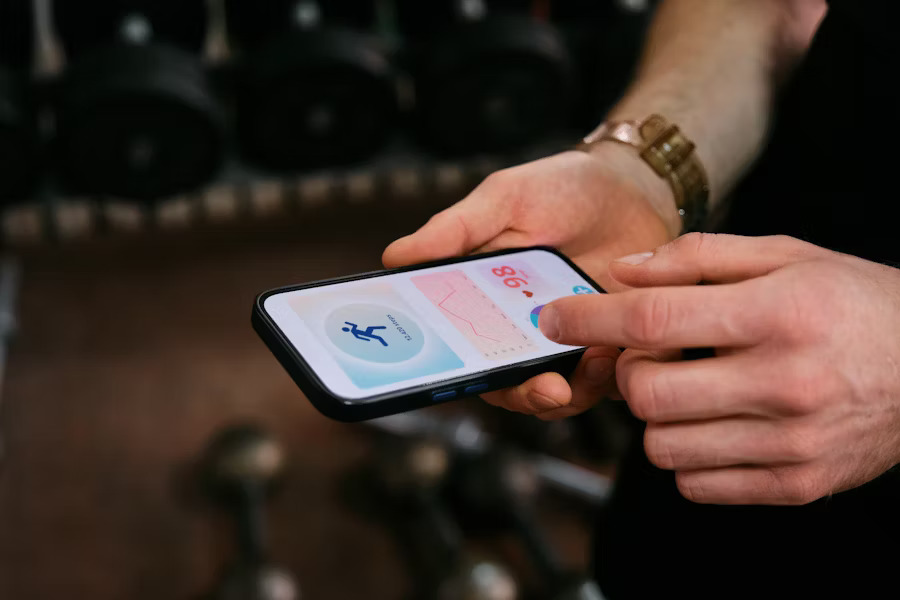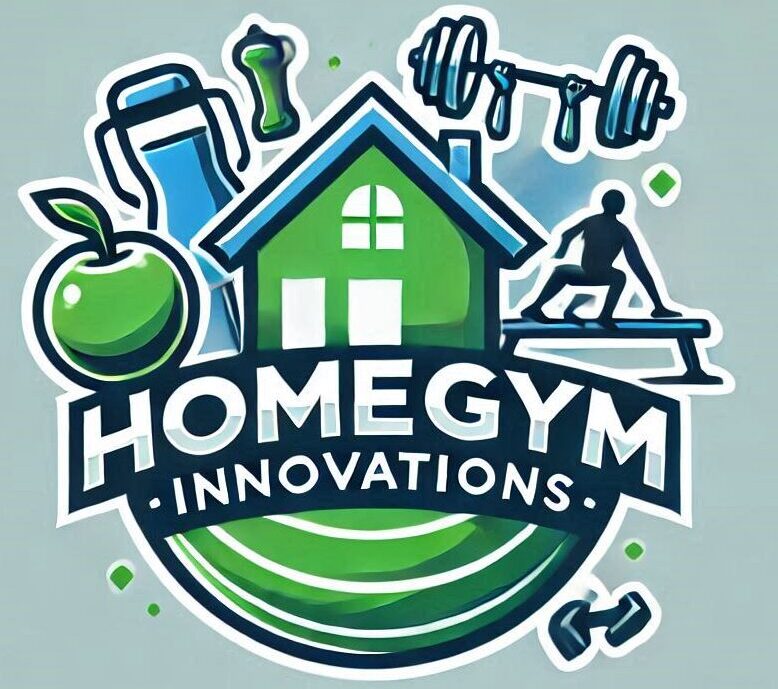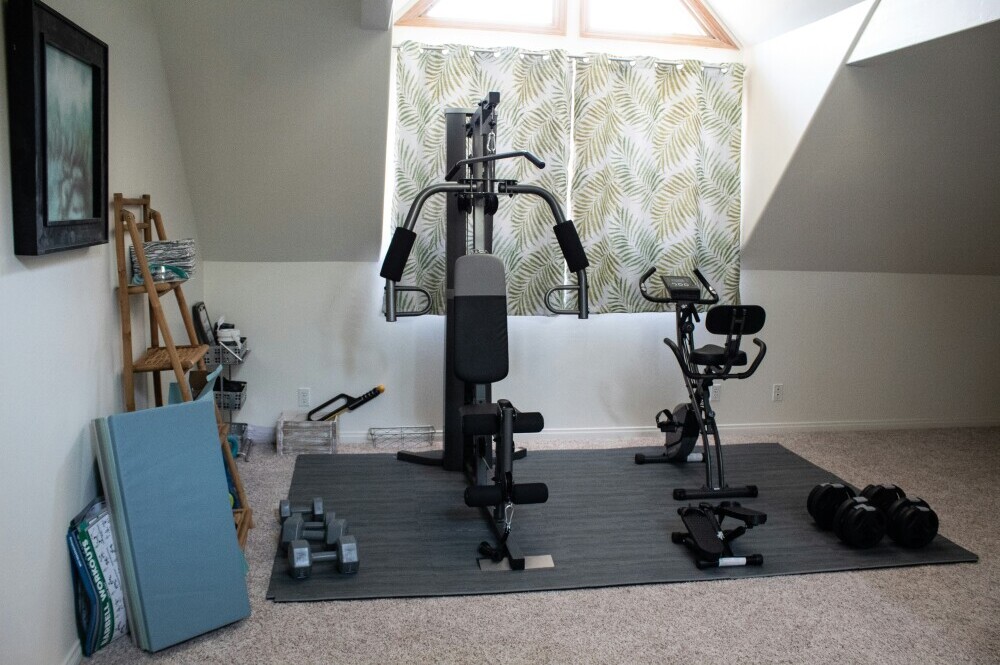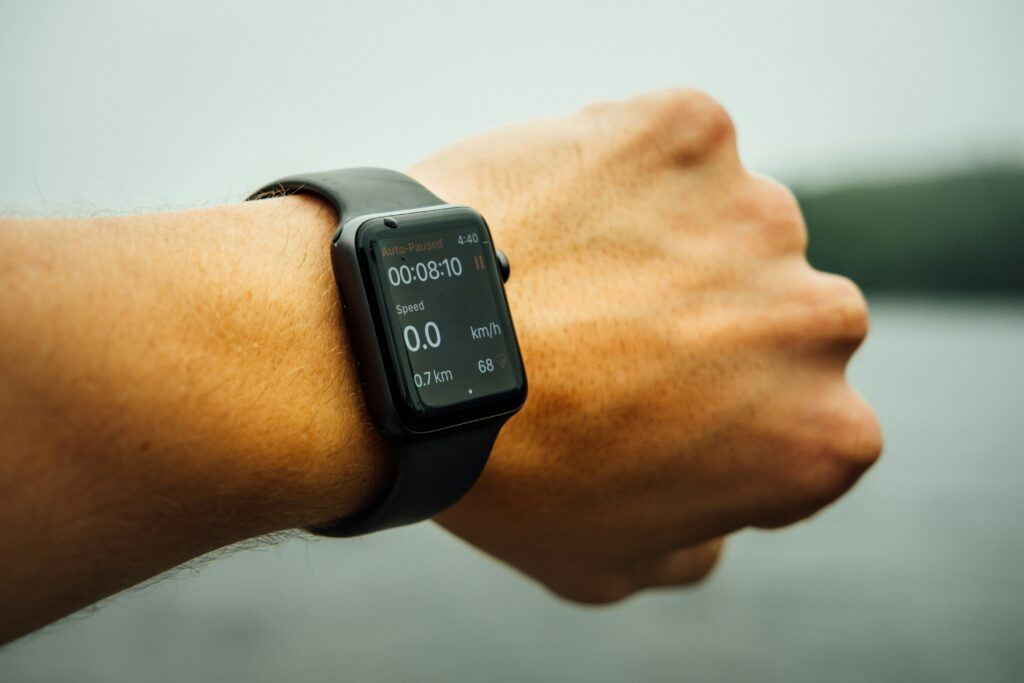
Picking the right fitness app for your home workouts is kinda like finding the perfect pair of sneakers. It’s gotta fit your lifestyle and goals just right! When you’re diving into this digital world of workouts, pay attention to what each app brings to the table.
First off, consider what you want from your workouts. Looking for strength training, yoga, or maybe a bit of both? Some apps, like FitOn, offer a smorgasbord of workout styles you can try out without dropping a dime. So, if variety is your thing, keep an eye out for platforms that let you explore different classes.
Technology is revolutionizing how we get fit at home. These apps are more than just videos—they’re like having a personal trainer in your pocket. Features like progress tracking and personalized plans can really ramp up your fitness game.
Think about how you’ll keep motivated too. Apps with community features or leaderboards, like Peloton, can add that extra bit of competition and camaraderie we sometimes need, especially when you’re sweating it out solo at home.
Don’t forget about usability. An app that’s hard to navigate or requires a PhD to figure out isn’t doing you any favors. It should be as simple as tap, sweat, repeat.
In 2025, expect even more innovations in fitness apps. We’re talking AI personal trainers and even more seamless integrations with your fitness gadgets. It’s pretty wild to think how tech is making fitness more accessible, effective, and, let’s be honest, more fun.
Unlocking the Potential of FitOn: The Free Revolution
Ever feel like fitness apps charge an arm and a leg just to get fit? That’s where FitOn shakes things up with its totally free offerings. It’s like walking into a digital gym where everything’s on the house, but still top-quality.
This app is a treasure trove of workout styles, from yoga and pilates to strength and cardio. There’s something for every taste. And with top-notch trainers leading the way, you’re not missing out on expertise.
One standout feature of FitOn is the personalized plans. Whether you’re squeezing in a quick ten-minute workout during breaks or going for a full hour, you get tailored session suggestions. It’s perfect for those crazy schedules when every minute counts.
Tracking progress is pretty straightforward too. You can easily see your improvements over time, which is a big motivational boost. Plus, the thought of having a little personalized plan in your pocket makes fitness a lot less daunting.
Many users rave about FitOn’s approach. It’s not just about sweating buckets; it’s about creating a routine that fits into your life naturally. It feels less like work and more like a healthy habit that sticks.
Nike Training Club and Peloton: Embracing Diversity and Community
Nike Training Club (NTC) and Peloton are like your workout buddies that push you towards diverse fitness experiences. Both apps pack a punch when it comes to variety, offering everything from bodyweight exercises to equipment-based routines.
NTC stands out with its premium content that doesn’t charge you a cent. Expert tips and nutrition advice are at your fingertips, alongside workouts tailored for any fitness level. It’s like having an all-in-one fitness magazine on your phone.
With Peloton, the community aspect takes center stage. Even if you don’t own their gear, you access a whole lineup of live and on-demand classes, including yoga, HIIT, and strength. That leaderboard feature? It spurs a sense of positive competition that can turn every workout into a fun challenge.
Both these apps offer a bit more than just workouts. They cater to different styles and preferences, which is great if you like mixing things up. They ensure you’re not just burning calories but also enjoying the process.
If you thrive on community support, Peloton’s social aspects might keep you motivated, while NTC’s well-rounded programs are perfect for those who enjoy structured guidance. It’s all about finding what speaks to your workout spirit.
Mindful Fitness: MyFitnessPal and Calm
Combining your workouts with nutrition and mindfulness can be a game-changer, and that’s where MyFitnessPal steps in. It offers not just calorie tracking but a snapshot of your nutritional intake, helping you see the big picture of your health.
It’s incredibly handy if you’re keeping tabs on what you eat alongside your workout regimen. Whether you’re bulking up or slimming down, this app makes meal tracking less of a chore and more of a strategic part of your plan.
Now, adding Calm into the mix brings in the mindfulness factor. Sure, it’s not a fitness app per se, but it complements your routine by promoting recovery and mental wellness. Those guided meditations can be just the thing after an intense sweat session.
Mindful fitness is about integration. By weaving in relaxation and reflection, you create a holistic health approach that keeps both your body and mind in tune. This method is especially useful if you’re prone to just ‘go go go’ without taking a breather now and then.
As fitness wearables get smarter, these apps can integrate effortlessly, gathering data from your devices to offer insights not only about steps and calories but also about your overall wellness journey. It’s like having a personal wellness coach guiding you to be your best self.
Future Trends and Innovations in Fitness Apps: A Look Beyond 2025
Looking ahead, fitness apps are set to revolutionize how we work out and maintain health. With technology evolving faster than a treadmill on max speed, expect some big changes.
Artificial intelligence is already making waves, creating highly personalized workout plans based on your progress and feedback. Imagine an app learning your habits and tweaking routines autonomously – it’s like having a virtual trainer that’s always there, adapting just for you.
Gamification is another trend gaining traction, transforming workouts into interactive experiences. Apps like Zwift, with their virtual races, make cardio anything but boring. Expect more apps to introduce game elements, keeping fitness engaging and fun.
The seamless integration of fitness data from wearables into apps means you’ll be getting comprehensive health insights with a simple glance at your phone. This technology will only get better, giving you a fuller picture of your wellness journey.
Mindful growth is trending, too. Blending physical activity with mental wellness through seamless app features will support both mind and body health in sync. As apps enhance this focus, holistic health will become more mainstream, changing the wellness landscape.
As we move past 2025, these innovations will redefine home fitness, offering not just workouts but a comprehensive, connected approach to health that fits right into our everyday lives.
Thanks for checking this post out feel free to to leave a comment, ask questions and be sure to look on the other posts for everything fitness.



I love this one topic of the shift towards more personalized fitness experiences through technology, especially with apps that offer tailored workout plans based on progress and feedback. The integration of AI personal trainers is a fascinating innovation to me, as it provides a level of customization that traditional gym experiences just can’t match. Instead of following a one-size-fits-all workout, AI in fitness apps can analyze your habits, track your progress, and adjust your routines accordingly, making the experience feel more like having a personal trainer who knows exactly what you need. I believe this helps us progress further in our fitness skills!
I am curious to know, how do you think AI-powered fitness apps can balance personalization with the need for human interaction, and what role should a personal trainer play in a fitness journey in the age of digital health?
Thank you for your comment! It’s exciting to see how technology is revolutionizing fitness with AI-powered personalization. The ability of apps to adapt workouts based on individual progress and feedback truly sets a new standard for accessibility and efficiency. You’re absolutely right—this approach can help us progress further by offering a tailored experience that traditional gym routines often lack.
AI-powered fitness apps excel at data-driven insights and adaptability, but there’s still something unique about the human touch. While AI can analyze metrics like performance trends and suggest adjustments, it lacks the emotional intelligence and empathy that a personal trainer brings to the table. A personal trainer can:
Provide encouragement: Sometimes, you need a motivational boost that AI simply can’t deliver.Address individual challenges: Trainers can account for factors like injuries, mental health, or other personal circumstances in ways AI can’t yet fully replicate.Offer hands-on guidance: Proper form and technique are critical, and in-person feedback remains invaluable for minimizing injury risk.
The Role of a Personal Trainer in the Digital Age
In this era of digital health, personal trainers can complement AI rather than compete with it. Here’s how they might fit into the evolving landscape:
Hybrid Approach: Trainers could use AI tools to track their clients’ progress and customize plans more efficiently, allowing them to focus on building rapport and offering tailored guidance.Specialized Expertise: While apps handle routine adjustments, trainers can focus on areas like rehabilitation, advanced techniques, or sport-specific training.Accountability and Motivation: For many, knowing someone is invested in their journey is irreplaceable. Trainers can create a deeper sense of commitment that apps may not fully replicate.
The Best of Both Worlds
Ultimately, AI and personal trainers don’t have to be mutually exclusive. For those who prefer the flexibility and cost-effectiveness of an app, AI offers incredible convenience. For others, a mix of tech and human interaction can create a more rounded fitness experience. The key is finding the balance that works best for your goals and lifestyle.
It’s fascinating to watch this shift toward personalized fitness, and I’m excited to see how both AI and trainers will continue to evolve in this space. Thanks for sparking such an engaging discussion—if you have any other thoughts or questions, I’d love to hear them!
A good post thank you.
I am 55 now so I have not worked out much lately, but back when I was in the fire service, fitness was a big part of my life. Of course, this was some time ago and way before all this tech existed. It is crazy how things have changed so fast.
Back then for my fitness tests, it was just a case of getting on the treadmill or exercise bike, and doing what was needed with little feedback. I was ok or not, and that was all. Thankfully, I was OK! 🙂
If you were to pick one app from this list for someone like me, who’s been away from keeping fit for a while but wants to get moving again, what would it be?
Appreciate the effort you’ve put into this—it’s definitely got me thinking about getting back into it.
Thank you so much for sharing your story it’s always inspiring to hear from someone who had fitness play such an important role in their life, especially in such a vital profession like the fire service. It’s incredible how much fitness technology has evolved since then, and it’s never too late to get back into it.
For someone like you who’s looking to ease back into fitness after some time away, I’d recommend an app like FitOn or Apple Fitness+ (if you have an Apple device). Both are beginner-friendly and offer a variety of low-impact options to help you get moving again without feeling overwhelmed. Here’s why I think they’re a great fit:
1. FitOn
It’s free to start and has a wide range of classes, from beginner-friendly stretching to low-impact cardio and strength.You can go at your own pace and gradually build confidence as you progress.The app also offers motivational guidance, making it easy to stay encouraged as you get back into a routine.
2. Apple Fitness+
If you have an Apple Watch or iPhone, this app integrates seamlessly with your devices to track your heart rate, calories burned, and overall progress.It offers shorter workouts, like 10-minute sessions, which are perfect for easing back into fitness.There’s a library of options, including yoga, cycling, and walking workouts, so you can pick what feels most comfortable.
If you’re looking for something even simpler, a walking-focused app like MapMyWalk might be a great start, especially if you enjoy being outdoors. Walking is one of the most accessible and effective ways to rebuild fitness, and it doesn’t require any fancy equipment.
It’s fantastic that you’re thinking about getting back into fitness it’s never too late to reconnect with movement and find what works for you now. Let me know if you’d like more suggestions or tips for easing into a routine.
Thank you for the recommendation for FitOn. All the apps I have tried are very limited, and to access more features and classes, you need to pay a hefty monthly sum, which I would rather pay to a gym. I see FitOn is free and you have an array of classes to choose from before having to pay which is very clever of them, as they are very likely to get more users in this way.
The only question is what would you do to stay motivated to use the app regularly, as I know it is so easy to skip workouts when you are only accountable to yourself?
Thank you for your comment, and I’m glad you found the FitOn recommendation helpful! It’s true—many fitness apps put their best features behind a paywall, so finding a free app with high-quality offerings like FitOn is a game-changer, especially when comparing costs to a gym membership.
As for staying motivated to use the app regularly, this is a common challenge with home workouts, but there are a few strategies that can help:
1. Set a Schedule
Treat your workouts like any other appointment. Block off specific times in your calendar and stick to them, just as you would for a class at the gym. Consistency builds habit!
2. Leverage App Features
Take advantage of reminders, progress tracking, and streak features within the app. FitOn, for example, allows you to set workout goals and track your progress, which can make skipping a session feel like breaking a promise to yourself.
3. Start Small
Commit to just 10–15 minutes to begin with. Once you start moving, you may feel motivated to complete the full session. Short workouts are also less intimidating and easier to fit into a busy day.
4. Mix It Up
The variety of classes on FitOn is a big advantage try different styles (HIIT, yoga, Pilates) to keep things fresh and exciting. Having fun with your workouts makes you more likely to stick with them.
5. Create Accountability
While self-accountability can be tough, apps like FitOn often have social features like sharing progress or joining challenges. Inviting a friend to join you or setting up a virtual workout together can also boost motivation.
6. Celebrate Wins
Reward yourself for hitting milestones, like completing a certain number of workouts in a week. These small celebrations will help you keep on track..
Finding the right fitness app to complement home workouts can be a game-changer, especially with how diverse workout routines have become in recent years. I really appreciate how this piece highlights apps tailored to different needs, from tracking progress to offering guided sessions.
One thing I’ve noticed when using fitness apps is that it can be overwhelming to decide between features like AI-driven recommendations, live classes, or customizable workout plans. Do you think there’s a way to determine which features are most critical based on individual fitness goals, or is it more about trial and error until you find the right fit?
Another aspect I find interesting is how these apps integrate with wearables. Some, like smartwatches or fitness bands, seem to enhance the experience by providing more accurate metrics. Have you seen a noticeable difference in the quality of insights when pairing apps with wearables compared to using the app alone?
Lastly, I’ve been curious about the community aspect many apps now offer. Do you think joining in-app challenges or connecting with other users genuinely helps keep motivation high, or could it sometimes become overwhelming? It’s fascinating to see how tech continues to shape the way we approach fitness and accountability!
Thank you for your thoughtful and engaging comment! You’ve touched on some critical aspects of using fitness apps effectively, and I’m glad this piece resonated with you.
When deciding between features like AI-driven recommendations, live classes, or customizable workout plans, the key is aligning them with your specific fitness goals. For example:
AI-driven recommendations: Great for users who prefer a hands off approach to planning workouts and value adaptive routines that evolve with their progress.Live classes: Ideal for those who thrive on real-time interaction and accountability.Customizable plans: Perfect for individuals with unique fitness goals or schedules who want to tailor workouts to their preferences.
While trial and error is often part of the process, starting with a clear understanding of your goals (e.g., weight loss, strength training, flexibility) and preferred workout style (solo vs. group) can significantly narrow down your choices.
Pairing fitness apps with wearables can elevate the experience by providing more precise data like heart rate, sleep patterns, and real-time activity metrics. Wearables also make it easier to track progress over time, offering a clearer picture of how your habits impact your fitness journey. The difference in insights can be substantial—wearables often add layers of depth to what apps alone can analyze. If you’re a data-driven individual, this integration is worth exploring.
In app challenges and user connections can be powerful motivators for many. Sharing progress, competing in challenges, or simply feeling part of a community fosters accountability and encourages consistency. However, it’s important to strike a balance if the competitive or social aspect starts to feel overwhelming, it’s okay to scale back and focus on personal goals. Finding what inspires rather than pressures you is key.
It’s incredible how technology continues to enhance how we approach fitness and accountability, and I agree it’s a fascinating evolution! Let me know if you’d like more recommendations or guidance in navigating this space.